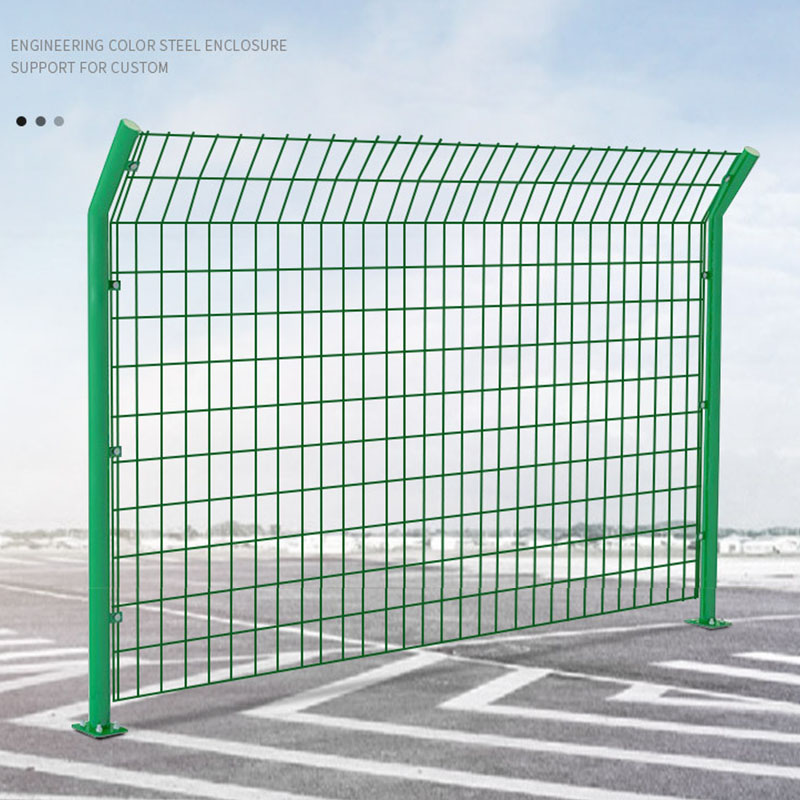Wire Mesh Fence: Your Complete Guide
In today's world, security is paramount. Whether it's protecting your home, business, or any property, having a reliable fencing solution is crucial. Among the plethora of options available, wire mesh fences stand out for their versatility, durability, and cost-effectiveness. In this guide, we delve deep into the world of wire mesh fences, exploring their benefits, installation process, maintenance requirements, and more.

Wire mesh fences also known as wire netting, are a type of fencing made from interconnected wires welded or woven together to form a grid-like structure. This flexible and sturdy material is commonly used to create barriers for various purposes, including security, containment, and demarcation.
Types of Wire Mesh Fences
Wire mesh fences come in various types to suit different needs and environments:
Welded Wire Mesh Fence:
Consists of welded wire panels, offering strength and stability.
Chain Link Fence:
Made from interlocking steel wires, providing transparency and airflow.
Hexagonal Wire Netting:
Features hexagonal openings, ideal for small animal enclosures and garden fencing.
Benefits of Wire Mesh Fences
Wire mesh fences offer a multitude of benefits that make them a popular choice among property owners:
Security: Provides a strong physical barrier, deterring intruders and trespassers.
Visibility: Maintains visibility, allowing surveillance and monitoring of the enclosed area.
Versatility: Suitable for various applications, including residential, commercial, agricultural, and industrial use.
Durability: Constructed from robust materials, ensuring long-term performance even in harsh conditions.
Cost-Effectiveness: Offers excellent value for money compared to other fencing options.
Installation Process
Installing a wire mesh fence requires careful planning and execution to ensure optimal results. Here's a step-by-step guide to the installation process:
Step 1: Planning and Preparation
Before beginning the installation, assess the area and determine the wire fence layout. Mark the boundaries and identify any obstacles or challenges that need to be addressed.
Step 2: Gathering Materials and Tools
Gather all the necessary materials and tools for the installation, including wire mesh panels, fence posts, concrete, wire tensioners, and tools such as wire cutters, pliers, and a post hole digger.
Step 3: Digging Post Holes
Use a post hole digger to dig holes for the fence posts at regular intervals along the boundary line. The depth and diameter of the holes should correspond to the size of the posts and the soil conditions.
Step 4: Installing Fence Posts
Insert the fence posts into the holes and fill them with concrete to secure them in place. Ensure that the posts are level and properly aligned before allowing the concrete to set.
Step 5: Attaching Wire Mesh Panels
Attach the wire mesh panels to the fence posts using appropriate fasteners such as clips or ties. Stretch the mesh tightly between the posts to prevent sagging and ensure uniform tension.
Step 6: Adding Finishing Touches
Once the wire mesh panels are securely in place, trim any excess wire and add finishing touches as needed. Inspect the fence thoroughly to ensure that it is sturdy and free from defects.
Conclusion
In conclusion, wire mesh fences offer a versatile, durable, and cost-effective solution for various fencing needs. Whether you're looking to enhance security, contain animals, or define property boundaries, wire mesh fences are an excellent choice. By understanding the benefits, installation process, and maintenance requirements outlined in this guide, you can make informed decisions and enjoy the peace of mind that comes with a reliable fencing solution.


